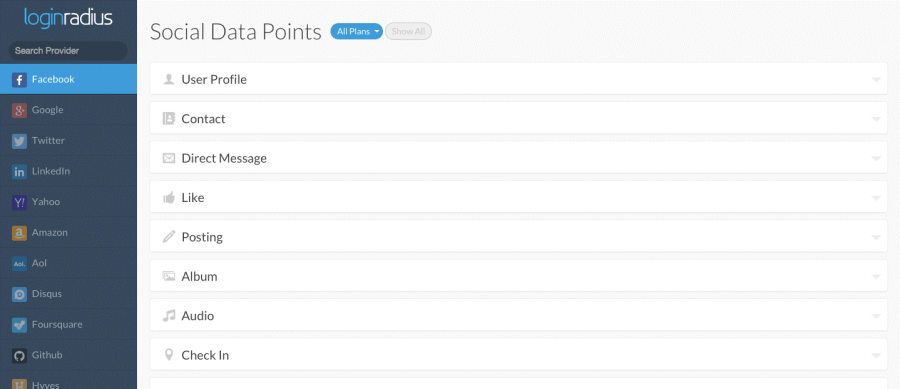How much do you really know about your customers? We’re not talking surface level here, okay?

Can you confidently say that you have a strong grasp of who your customers are, what their real needs are, and why they choose to do business with your company over other options in the market?
Do you?!
Okay, sorry, but we know how hard it can be to remove yourself from the clutches of the assumptions about your own product. That being said, we also know that collecting data is a huge part of understanding your consumer, and any successful marketing campaign.
Customer insights and customer analysis are a key way to uncover details about your customers’ preferences, thoughts, views, and what they like and don’t like about your company—without having to venture a guess from your biased perspective.
Right now, the sources for customer insights you use could be flawed. Traditional methods to collect data—such as surveys, questionnaires, and customer reviews—can lead to incorrect assumptions about your customers’ attitudes, preferences, and overall user experience.
The reality is that your customers may not be who you think they are, especially if you are using unreliable or evolving customer insight data to formulate your marketing strategies.
“Your customers are not loyal. The brutal truth is that 75% of your customers would gladly do business with the competition — because companies have not created the emotional connection that creates customer loyalty and advocacy,” says leadership expert Bill Hogg in Satisfied Customers Are Killing Your Business: 3 Strategies to Strengthen Your Emotional Connection with Your Customers.

This is why you need to understand who your customers really are. If you don’t, it will be abundantly obvious, and your customers will move on to the next option that can meet their personal, transactional, and emotional needs.
To ensure you are collecting real customer insights, you need to broaden data collection practices by integrating social data, web and social analytics, and customer records to get more reliable and accurate data to make strategic marketing and business decisions.

“The quest for a single tool/source to answer all your questions will ensure that your business will end up in a ditch, and additionally ensure that your career (from the Analyst to the web CMO) will be short-lived,” says Avinash Kaushik, author of Web Analytics 2.0, to inc.com, making it very important to not only use multiple sources of data to gain customer insights, but to also use the right sources.
4 Reasons Why Traditional Data Collection Methods Don’t Work
#1 – Response rates are low
Getting people to actually fill out surveys and questionnaires is a challenge unto itself. According to Customer Thermometer, “A typical response rate for an online survey is much lower than 10%. That means the vast majority of your customers (90%+) are not telling you what they think. You might be able to argue that away statistically, but in reality, are you happy that so many of your customers don’t have a voice?”

Traditional sources of customer insights make it problematic to execute accurate customer analysis for the simple fact that you are really only gathering data about a small percentage of your customer base, making it difficult to make predictions about your entire customer population.
#2 – Customers don’t like filling out long forms
The stark reality is that people don’t want to spend time filling out long surveys or questionnaires. If they do fill them out, they do them as quickly as possible and put little time into thinking about their answers.
Plus, people also have the potential to lie. Close to 90% of users admit to entering false information into web registration forms, and this is no different for online surveys and questionnaires.
“No matter what you do, research has shown that there will always be a small minority of people who will lie on your survey, especially when the questions pertain to the three B’s: behavior, beliefs or belonging,” adds Gregory Ciotti from Help Scout.
#3 – Online surveys and questionnaires are only a snapshot in time
Real time customer data is what marketers are really after. You want to get a real time picture of what is happening with your customers as your customer base evolves over time. Surveys and questionnaires only provide you with a snapshot in time.
“People’s views change continuously, and the performance of companies in delivering customer satisfaction is also changing. Measuring satisfaction must be a continuous process,” says Paul Hague and Nick Hague in a B2B International White Paper.

By the time you have completed surveying your customers, collecting the data, and performing a customer analysis, things might have already changed, reducing the value of the data collected.
#4 – Levels of satisfaction and scales are arbitrary
By nature, most traditional customer data collection methods are impersonal, reactive and arbitrary. A “7/10” or “very good” rating to me may mean something completely different to you when compared to another customer.
There are people who never give higher than a 7 rating, and there are people than never give lower than a 7 rating, and this calls into question what a rating really means and tells you about your customers. Surveys and questionnaires often fail to follow up and get an understanding of why customers provided the rating.
“I kind of, sort of, perhaps, after thinking it over, am not sure if I agree or disagree. Strongly.”

It doesn’t mean anything!
5 Reliable And Accurate Sources To Collect Customer Insights
Getting hold of quality user data is the key first step in keeping your customer base happy. Effective customer analysis is only possible when you have accurate and reliable sources of data.
When you have access to high quality data, it allows you to provide more personalized service, helping to increase conversion rates, increase revenue, retain your customers, and create the user experience they expect when they interact with your brand’s website.
Here are some of the best sources of customer insights:
#1 – Customer Records
Customer records can tell you a lot about your customers without having to ask them.
As previously stated in 8 Ways to Personalize the User Experience, “Chances are high that you already have extensive customer information at your fingertips. Mine that information to find out what they are buying, how often and how they came to your website in the first place – all highly useful data that will help you work out what they value most and how to keep them coming back.”
“Our customer profiles shouldn’t be viewed as a database of sterile information used only for getting things from them. We should insert questions that help us serve our customer better. Every campaign we run as marketers can be personalized to a customer cohort based on profile information, making the campaign more valuable to them,” adds Joanna Lord from Marketing Land.
#2 – Social Data

Gaining social profile data can give you access to more than 300 user data profile points. Since many of these data points are verified, you have an accurate source of data in real time that can be fed into other enterprise solutions such as your CRM and other marketing automation tools.
Social data helps to reduce mismarketing and misunderstanding user preferences, which can help with customer segmentation.
“Popular social networks like Facebook and Twitter give brands a front-row seat to the collective conversation consumers are having about their products and services. From that conversation, brands may, in theory, be able to gain valuable insights that help them connect with consumers and serve them better,” says Patricio Robles on Econsultancy.
#3 – Social Media Analytics
Social Media Analytics provide you with in-depth data and customer analysis about your customers and how your social and marketing efforts are connecting with them. This data will help you develop your relationship with them, understand how they interact online, gain access to real time data, and understand the type of content they enjoy, share and view.
#4 – Web Analytics
How your customers interact with your website and other online properties can tell you a lot about their preferences, the information they value, and the products and services that they are interested in.
Tools such as Google Analytics, Crazy Egg, Kiss Metrics, and social analytics tools such as Facebook Insights and Twitalyzer provide you with a diverse data set to further your understanding of your customers.
#5 – Customer Success Team
Your customer service team is an invaluable resource. They deal with your customers directly and have a great understanding of your customers’ needs—in real time.
“The customer success team is told when words are confusing or your site structure doesn’t make sense. They are the ones who hear it when your pricing page leaves more questions than answers, and when your blog categories confuse more than help. So, set up a bi-monthly meeting with the customer service team, read their weekly summaries carefully, and visit them often. We should be tapping into this customer data often and using it to steer our marketing tests,” says Lord.
Conclusion
The dangers of operating on incorrect data and assumptions cannot be overlooked. From incorrect customer segmentation, impersonal marketing strategies, and failing to connect with customers on a deeper level, failure to have accurate customer insights can hurt your business.
Anything we missed? Post your customer success tips in the comments below!
(198)









